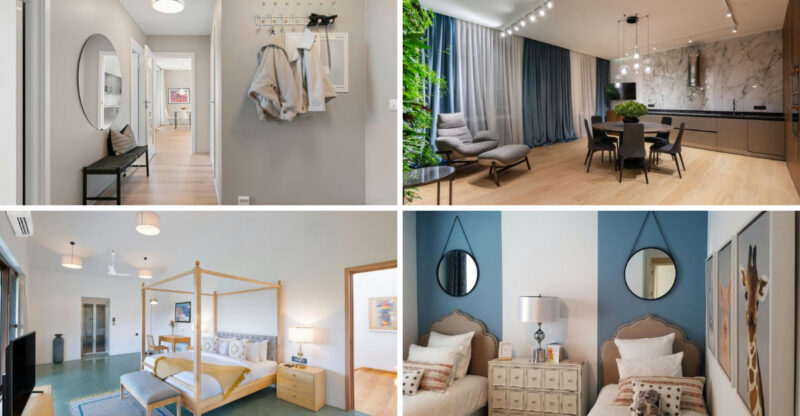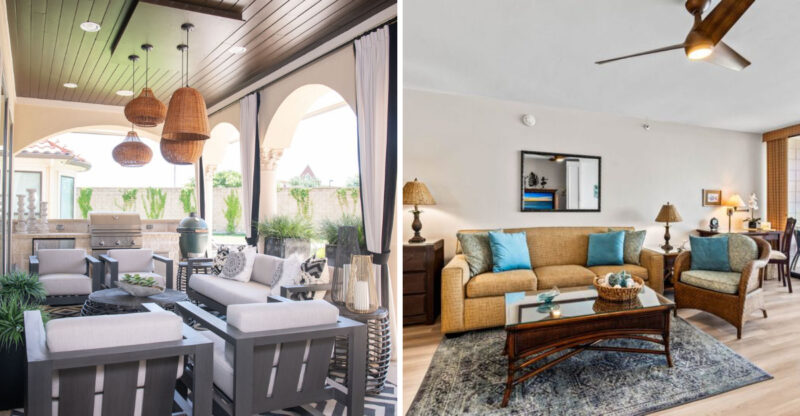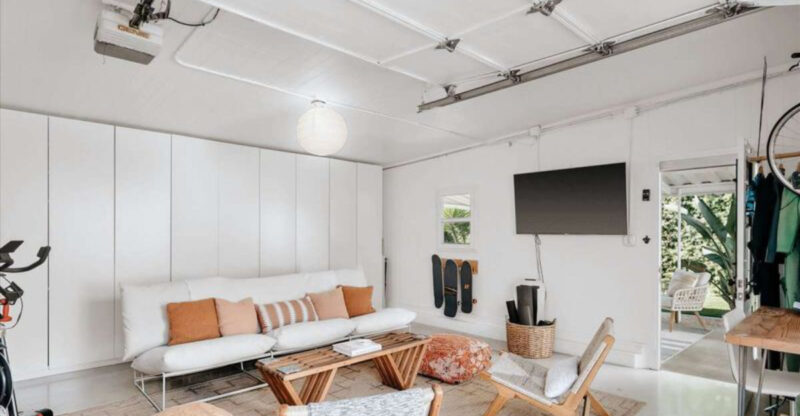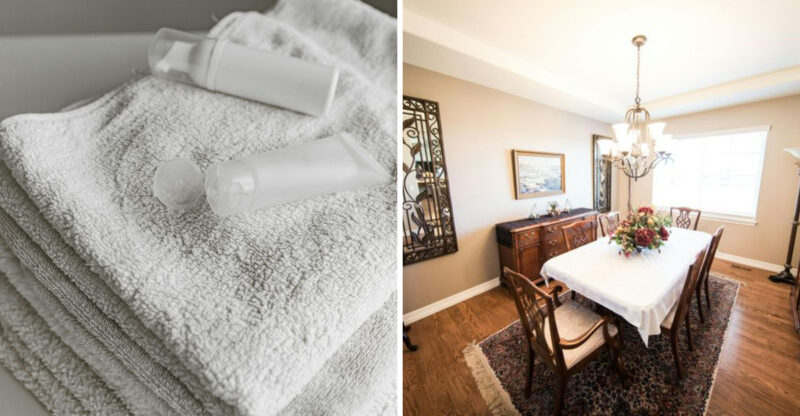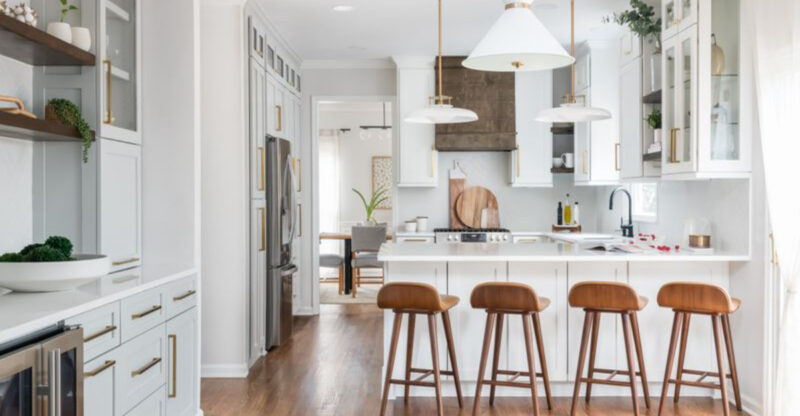13 Old-School Florida Design Touches You’ll Only Find In Beach Towns
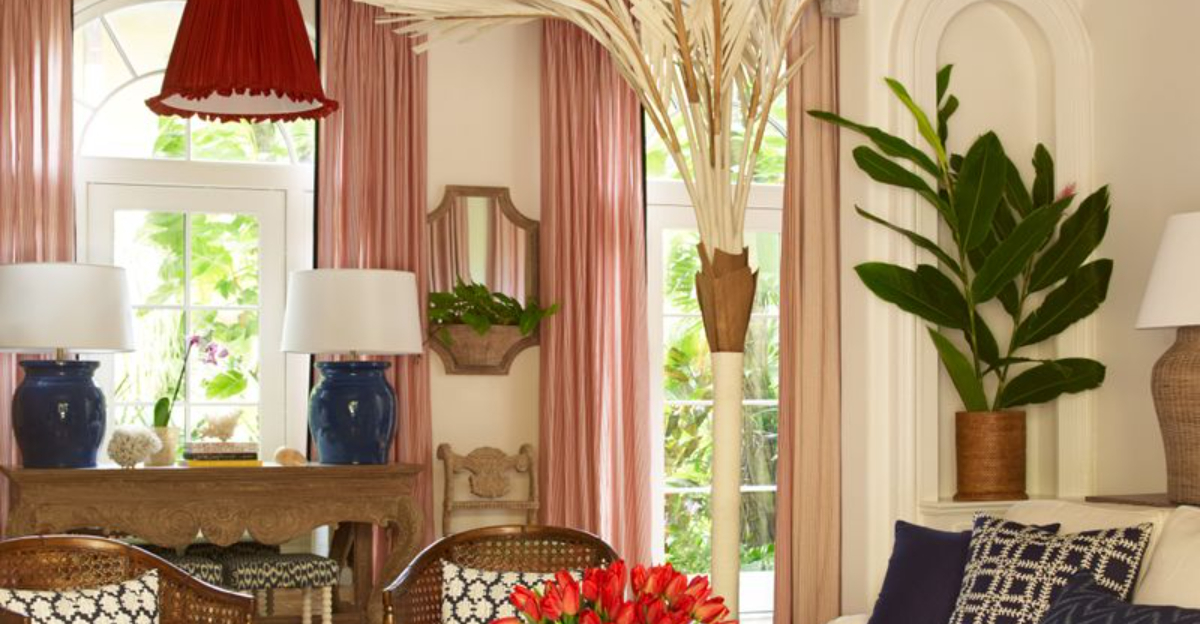
There’s a certain magic in wandering through a classic Florida beach town where pastel cottages, breezy porches, and salt-worn details whisper of sun-soaked days gone by.
These vintage coastal aesthetics do more than charm the eye; they tell the story of Florida’s rich seaside heritage. From art deco accents to nostalgic boardwalk vibes, every design detail carries a sense of place and time.
Let’s dive into the timeless touches that give Florida beach towns their unmistakable character and make you feel like you’ve stepped into a postcard.
1. Rattan and Wicker Furniture
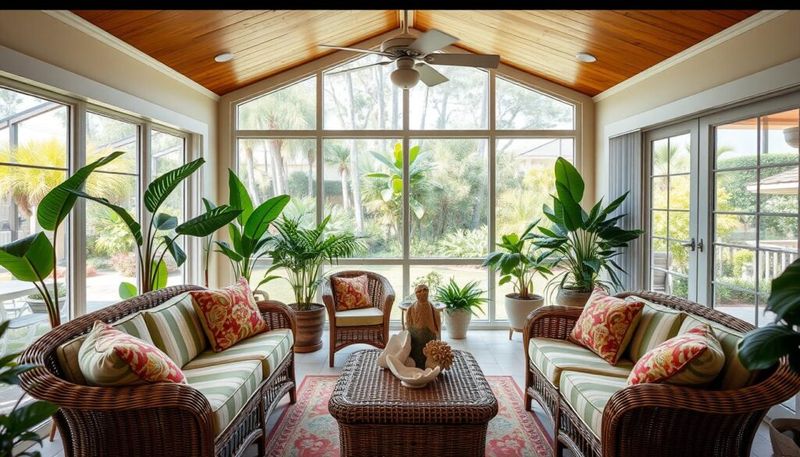
Nothing screams “Florida beach house” quite like a sunroom filled with rattan chairs and wicker sofas. These lightweight, breezy furnishings have been coastal staples since the early 1900s when wealthy northerners began furnishing their winter homes.
The natural materials hold up surprisingly well in humid climates and provide that perfect tropical vibe. You’ll spot these pieces with colorful cushions on screened porches and in living rooms throughout coastal communities.
Authentic vintage pieces often feature intricate patterns and unexpected shapes – peacock chairs, curved settees, and rolling bar carts that have witnessed decades of sunset cocktails and afternoon naps.
2. Pastel-Colored Exteriors
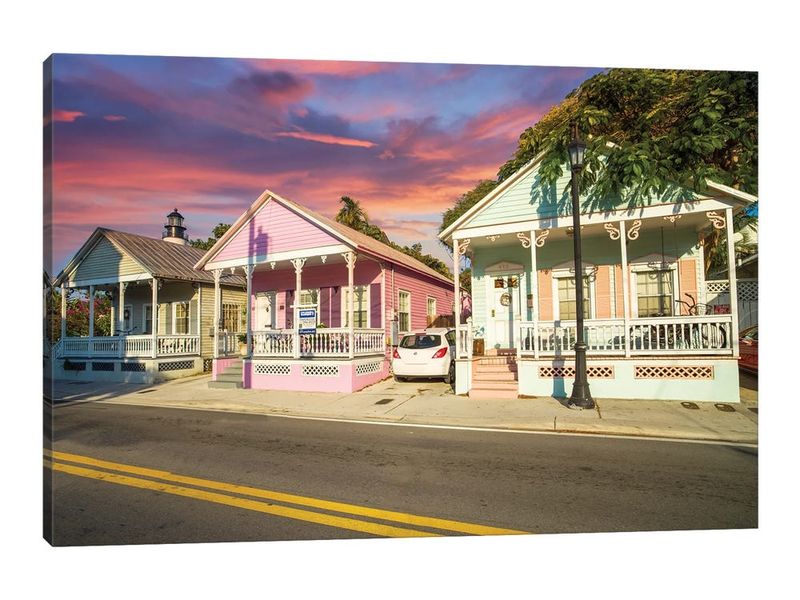
Walking down a street in places like Naples or Key West feels like stepping into a watercolor painting. Those mint green, coral pink, and sky blue buildings aren’t just pretty – they’re practical! Lighter colors reflect the harsh Florida sun, keeping interiors cooler.
This tradition dates back to the 1920s-30s when these cheerful hues became signatures of Art Deco and Mediterranean Revival styles. Each shade has its own nickname among locals – conch pink, seafoam, and horizon blue tell stories about the natural surroundings.
Many communities now have preservation codes ensuring these candy-colored streetscapes remain intact, protecting this distinctive feature of Florida’s coastal identity.
3. Terrazzo Flooring
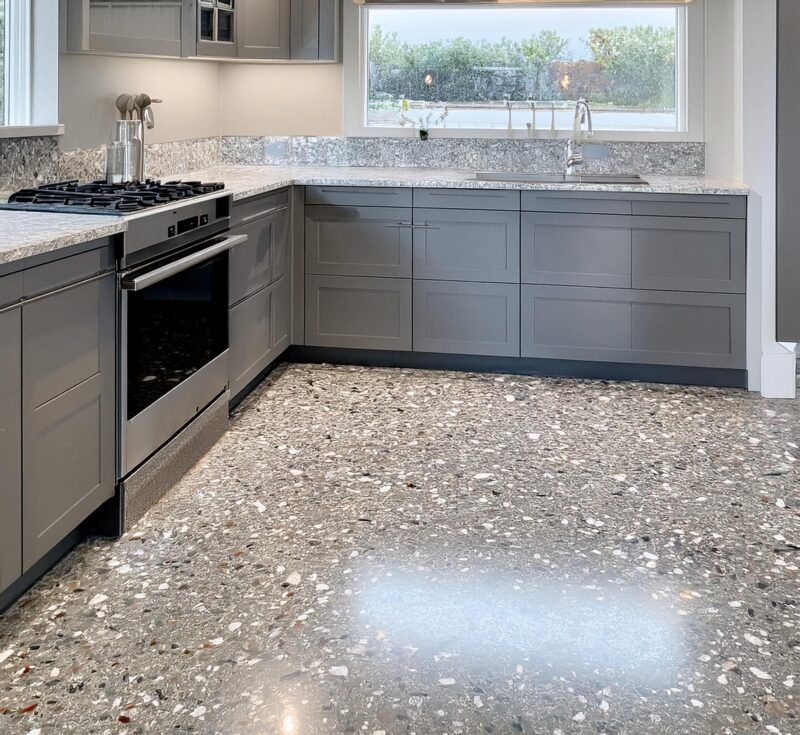
If you’ve ever admired those speckled, polished floors in vintage Florida beach motels or homes, you’ve fallen for terrazzo. This distinctive flooring became wildly popular during Florida’s mid-century building boom when it offered the perfect solution for sandy feet and high humidity.
Made from marble chips embedded in concrete then polished to a high shine, terrazzo resists water damage and stays cool underfoot. The colorful specks often incorporate local materials some authentic Florida terrazzo contains fragments of native seashells or coral!
Though installation was labor-intensive, these floors last for decades. Finding original terrazzo in a beach property today is like discovering buried treasure for architecture enthusiasts.
4. Louvered Shutters
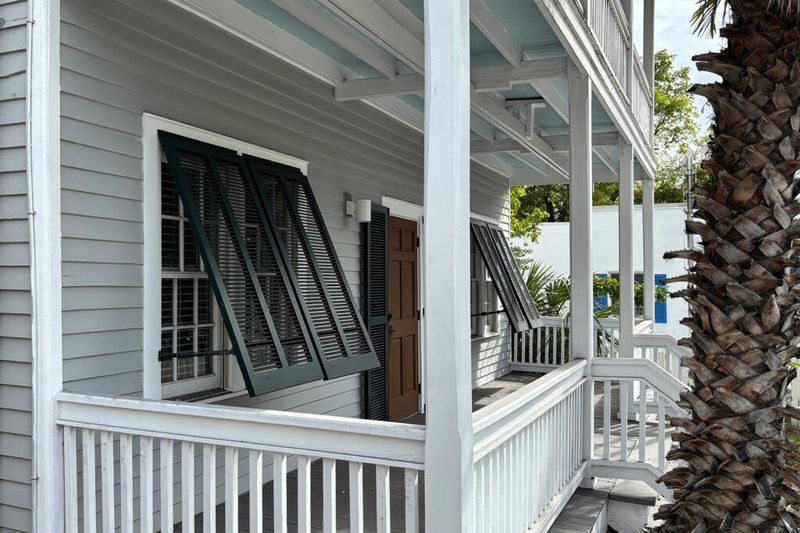
Those angled wooden slats adorning windows throughout Florida beach towns aren’t just decorative – they’re hurricane-tested climate control! Before air conditioning became widespread, louvered shutters allowed residents to manage airflow while keeping out tropical downpours.
Usually painted crisp white or soft pastels, these shutters create distinctive shadow patterns across interior walls as sunlight filters through. Many vintage examples feature cut-out designs – crescents, anchors, or palm trees – that cast whimsical shadows and reveal the personality of the original homeowners.
Modern beach houses often incorporate these classic elements, though today’s versions might be aluminum rather than the cypress wood traditionally used. The timeless style remains instantly recognizable as quintessentially Floridian.
5. Nautical Rope Accents
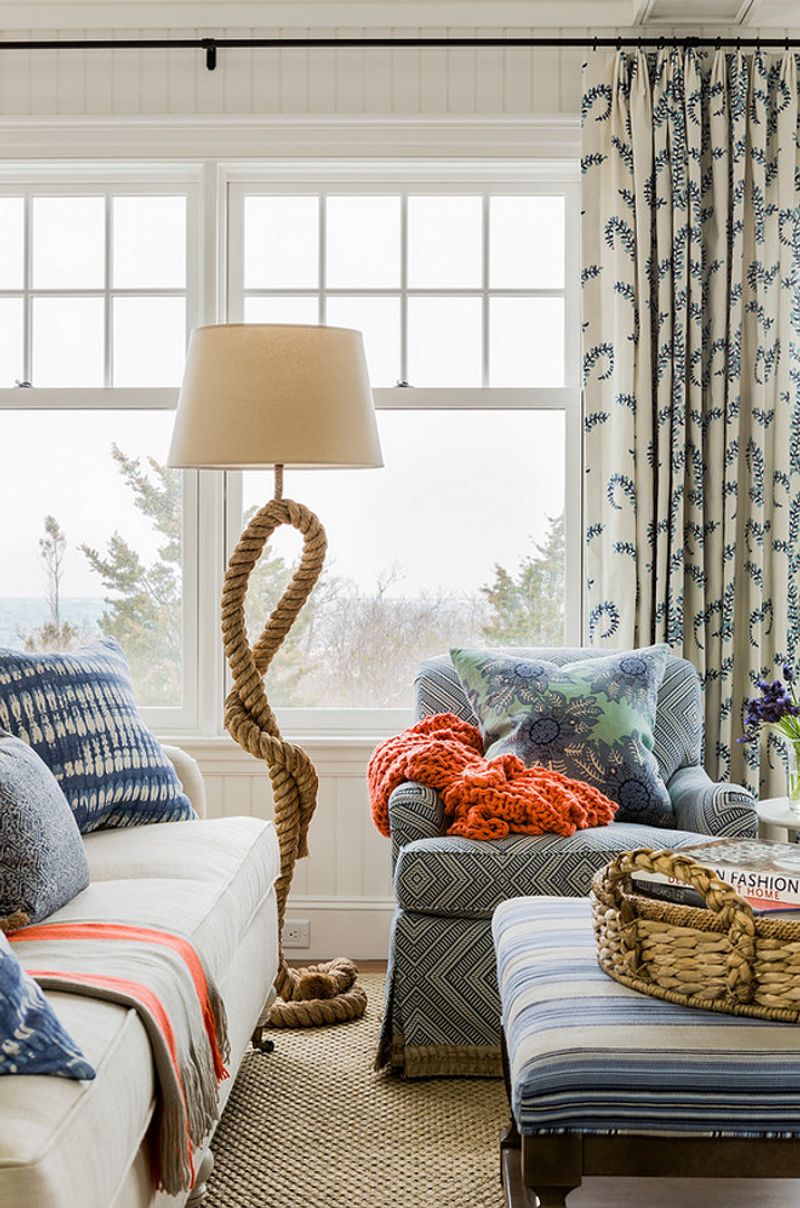
From staircase railings to mirror frames, thick nautical rope brings authentic maritime charm to Florida beach homes. This practical material became decorative during the mid-20th century when coastal living became fashionable rather than purely functional.
Genuine sisal or manila rope develops a beautiful patina over time, telling stories of salty air and countless sunny days. You’ll find it wrapped around porch columns, framing doorways, or serving as unexpected trim along ceiling beams in classic beach establishments.
The most charming examples show signs of creative DIY craftsmanship – knots and splices revealing the handiwork of someone who likely spent time on actual boats. This authentic connection to seafaring traditions gives Florida beach towns their distinctive salty character.
6. Breeze Block Walls and Privacy Screens
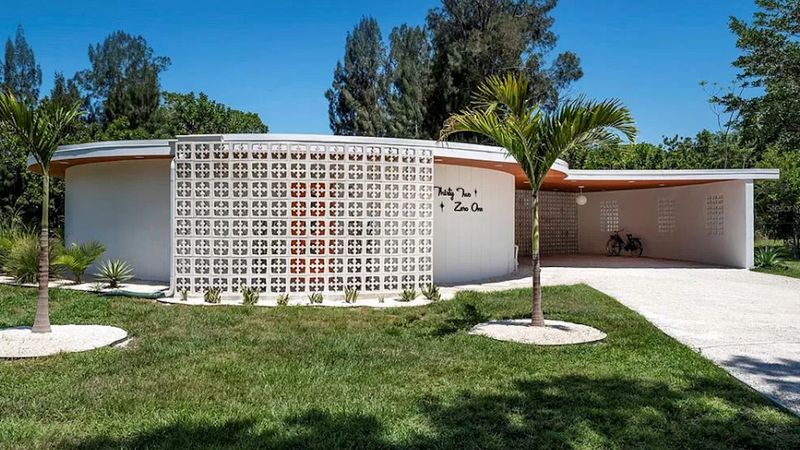
Those decorative concrete blocks with geometric cutouts that create dappled light patterns? They’re called breeze blocks, and they reached peak popularity during Florida’s 1950s-60s building boom. Smart and stylish, these architectural elements allow air circulation while providing privacy and security.
Drive through older beach neighborhoods and you’ll spot them forming carport walls, courtyard enclosures, and patio screens. Each pattern has its own nickname – snowflake, Barcelona, delta – and collectors now treasure these distinctive designs.
The best examples create magical shadow play as sunlight shifts throughout the day. While modern homes might incorporate them as retro accents, in classic beach towns you’ll find entire walls constructed from these functional art pieces, creating spaces that are quintessentially Floridian.
7. Shell-Encrusted Decor and Mirrors
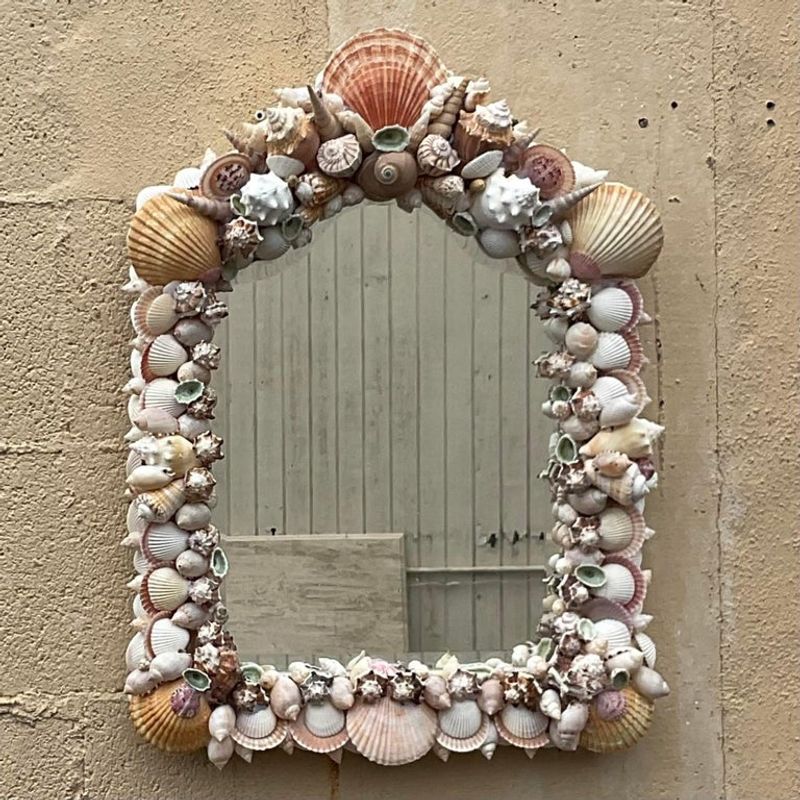
Long before Pinterest existed, Florida beach residents were creating shell-studded masterpieces. Picture frames, mirrors, lamps, and even entire walls covered in carefully arranged seashells represent the ultimate souvenir of coastal living.
These handcrafted treasures reached peak popularity in the 1940s-60s when shell collecting became a beloved tourist activity. The most impressive examples feature intricate patterns using dozens of shell varieties – from tiny coquinas to dramatic lightning whelks all harvested from local beaches.
Visit historic beach motels and restaurants to find spectacular vintage pieces still adorning walls. Though modern interpretations exist, there’s something magical about these original creations with their slightly yellowed glue and shells that have witnessed decades of Florida sunshine and countless admiring glances.
8. Flamingo and Palm Tree Motifs
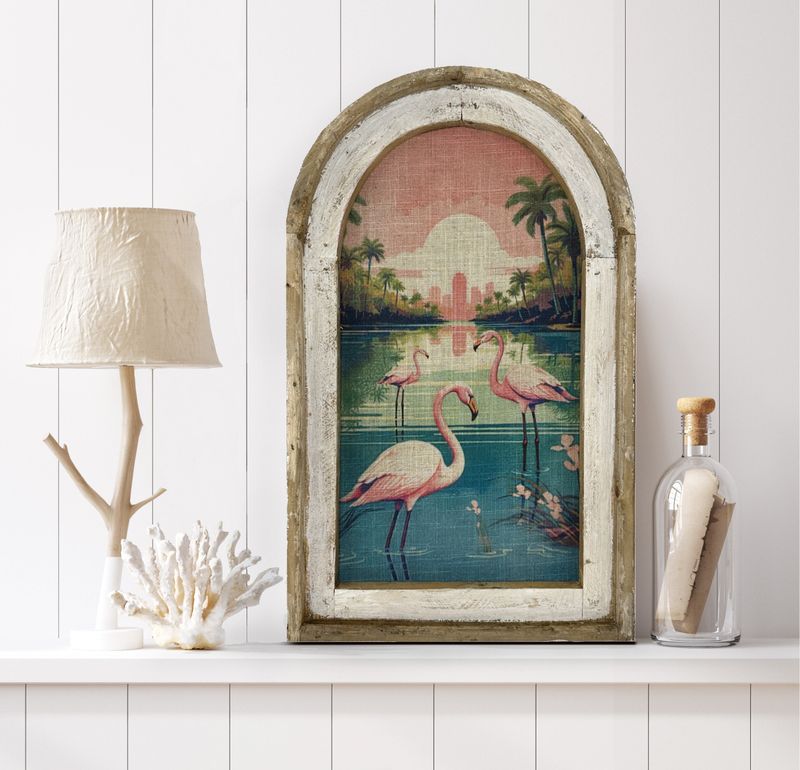
Before they became ironic kitsch, flamingos and palm trees were simply the natural symbols of Florida’s tropical identity. These iconic motifs appeared on everything from bathroom tiles to porch railings in beach towns during the tourism boom of the 1930s-50s.
Hand-painted flamingos might grace a vintage mailbox, while wrought iron palms form decorative elements on gates and window guards. The most charming examples show signs of weathering – slightly faded pink paint or rusted metal that’s earned its patina honestly through decades of salt air exposure.
While mass-produced versions abound today, keep an eye out for original handcrafted interpretations in older establishments. These authentic pieces capture the optimistic spirit of Florida’s golden age of tourism and domestic travel.
9. Bamboo Ceiling Fans
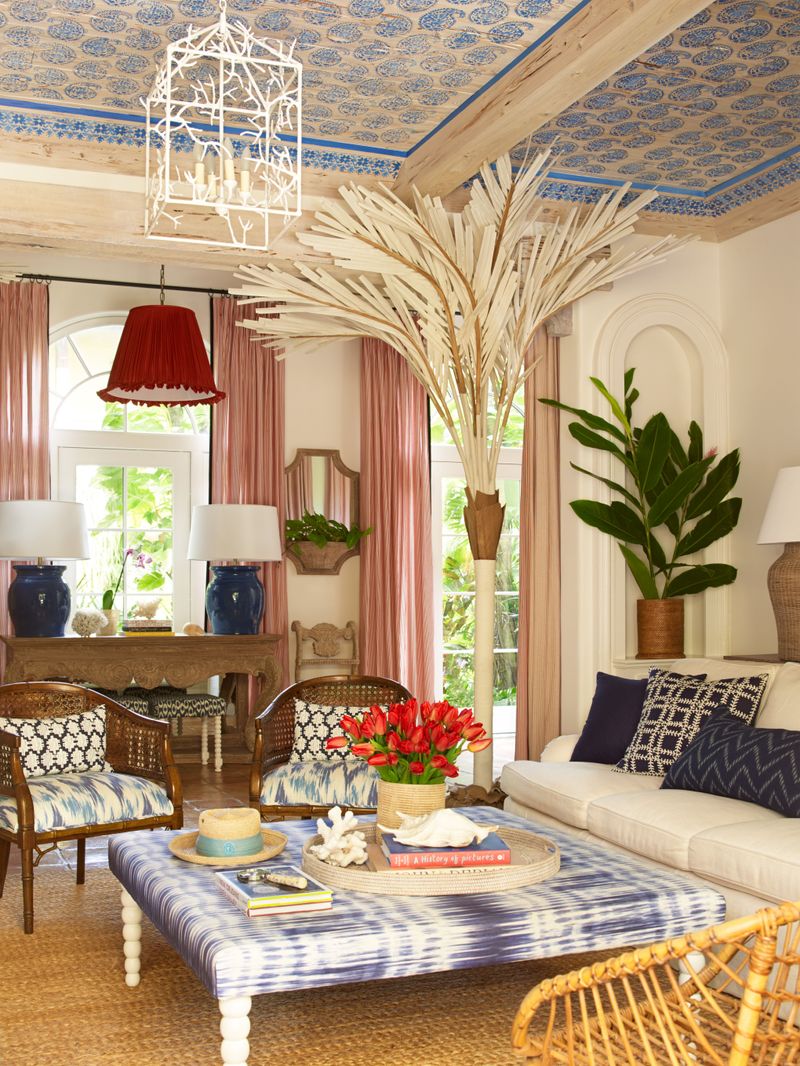
Whirring gently overhead in Florida’s oldest beach establishments, bamboo ceiling fans tell stories of pre-air conditioning days. With their natural materials and tropical styling, these functional fixtures established the perfect laid-back atmosphere for coastal living.
The distinctive wooden blades often actual bamboo or carved to resemble it create gentle breezes while adding visual warmth to spaces. Many vintage models feature pull chains with quirky decorative elements like miniature palm trees or fish that swing hypnotically as the fan rotates.
Though modern reproductions exist, authentic pieces from the 1940s-60s have developed a beautiful honey-colored patina from decades of sea air. Look for them in family-owned restaurants and motels where they’ve been faithfully maintained as part of Florida’s coastal heritage.
10. Whitewashed Wood Paneling
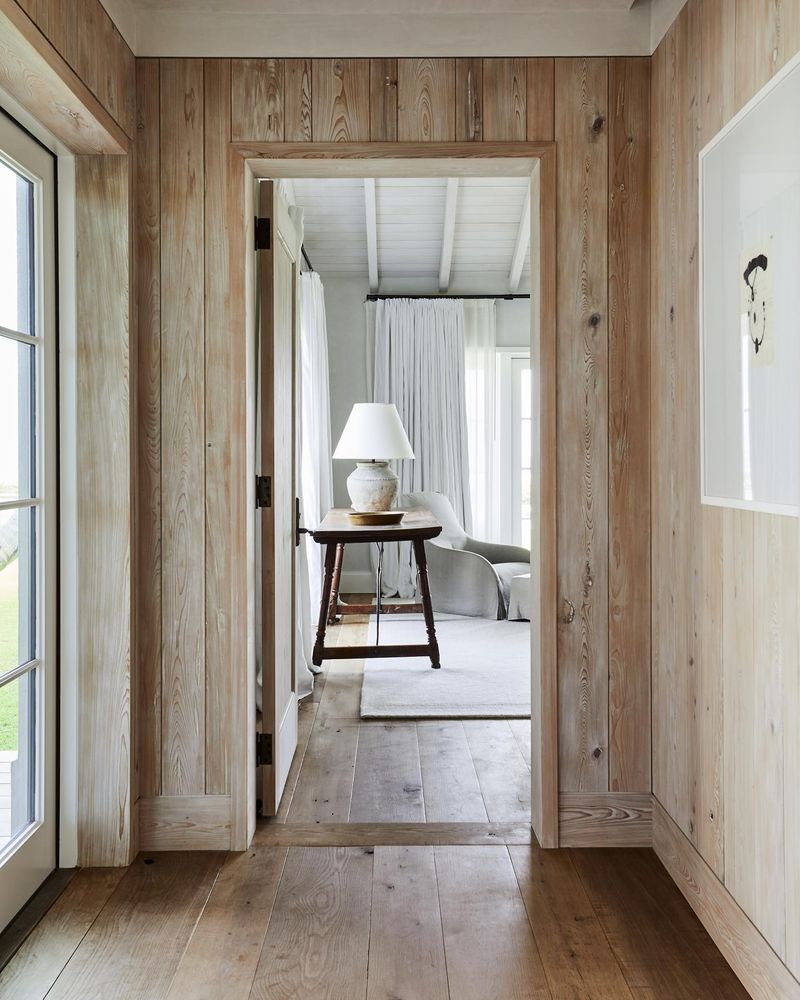
Step into a classic Florida beach cottage and you’re likely to find walls covered in whitewashed wood paneling. This signature look emerged as a practical solution – the semi-transparent finish allows wood’s natural beauty to show through while brightening spaces and resisting humidity damage.
Often installed vertically to create the illusion of height in modest beach bungalows, these panels develop character over time. The most authentic examples show subtle variations in the whitewash application and slight warping from decades of seasonal changes.
While modern designers might recreate this look with fresh materials, nothing compares to the genuine article with its imperfections and history. The soft, diffused light reflection creates that unmistakable glow that says “Florida beach house” the moment you walk through the door.
11. Vintage Coastal Postcards as Wall Art
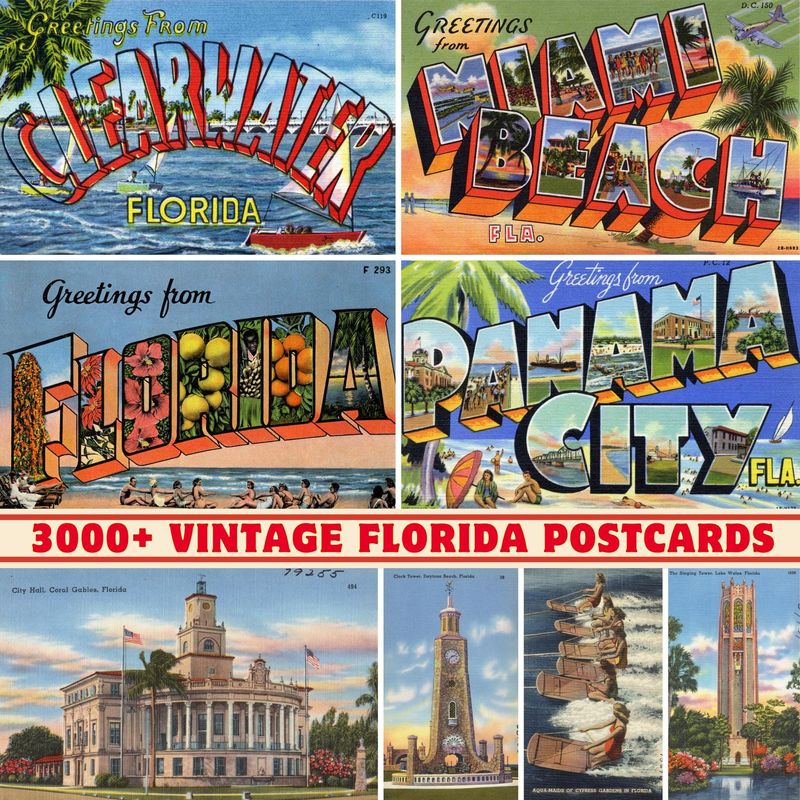
“Greetings from Sunny Florida!” Those vibrant, oversized letters filled with beach scenes aren’t just nostalgic – they’re part of beach town decorating tradition. Framed vintage postcards adorning the walls of coastal establishments connect visitors to decades of tourism history.
The most treasured examples date from the 1930s-60s, featuring saturated colors and slightly exaggerated scenes of palm-lined beaches and impossibly blue waters. Local restaurants often display collections showing their own establishment through the decades a visual timeline of changing fashions and unchanging coastlines.
Look closely at these time capsules and you’ll spot details that reveal authentic Florida: alligator wrestling shows, glass-bottom boats, and roadside orange stands that defined the state’s early tourism identity before the mega-theme parks arrived.
12. Retro Surfboards as Decor
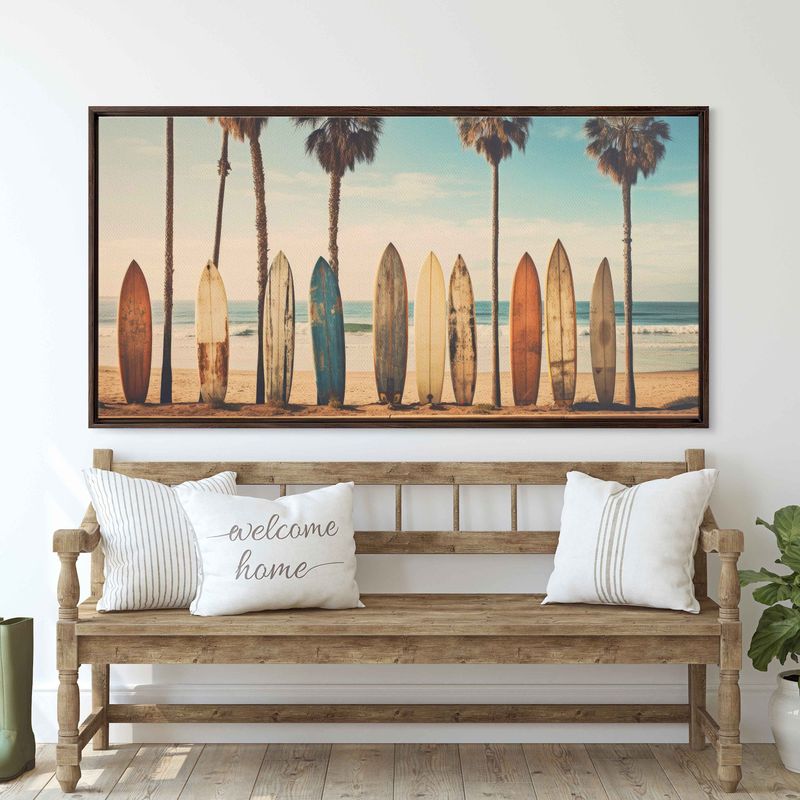
Mounted on walls or propped in corners, vintage surfboards serve as colorful reminders of Florida’s beach culture heyday. These wooden and early fiberglass boards from the 1950s-70s weren’t just sporting equipment – they were cultural artifacts that now tell stories about coastal communities.
Faded by sun and salt, authentic boards display distinctive design elements from different eras – from the streamlined wooden longboards of early surf culture to the psychedelic colors of the shortboard revolution.
Many Florida beach establishments display boards with local significance, sometimes signed by regional surfing legends. The most cherished examples show honest wear – ding repairs, yellowed resin, and hand-painted designs that capture specific moments in Florida’s surf history. They’re not just decorative objects but preserved pieces of coastal heritage.
13. Tropical Floral Upholstery
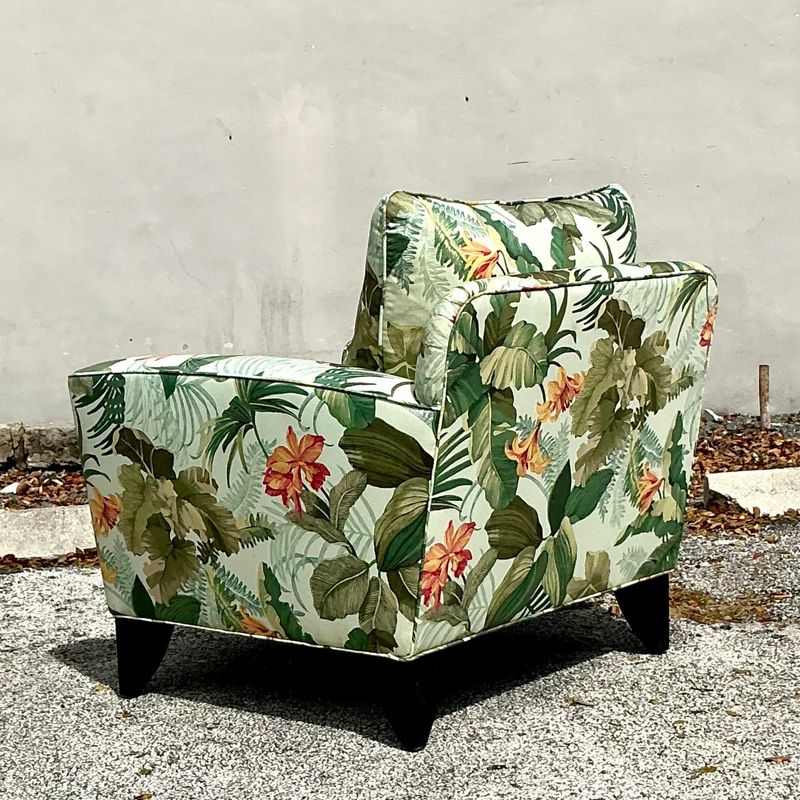
Bold hibiscus blooms, oversized monstera leaves, and stylized palm fronds create instant tropical atmosphere on furniture throughout classic Florida beach establishments. These vibrant textiles reached peak popularity during the 1940s-60s when indoor-outdoor living became the Florida ideal.
The most authentic examples feature natural fibers like cotton or linen in saturated colors that have softened beautifully with age. You’ll find them covering everything from dining chairs to sofa cushions, often mixed fearlessly with other patterns in that distinctively confident mid-century style.
While contemporary designers create modern versions, nothing compares to discovering original upholstery preserved in family-owned motels or restaurants. These textiles capture Florida’s optimistic post-war aesthetic when tropical patterns weren’t yet cliché but fresh expressions of the state’s exotic natural beauty.

